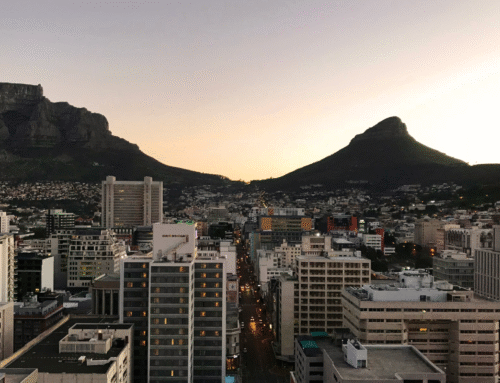AN APPROACH TO VALUING INVADED LAND AND HIJACKED BUILDINGS
Contributed by Dianne de Wet – Professional Valuer, President of SAIV
The South African constitution entrenches the Bill of Rights, which is a cornerstone of our democracy and affirms the right to dignity, equality and freedom, including the freedom of movement. The State must respect, protect, promote and fulfil these rights. However, these rights are subject to certain limitations as indicated in the Bill.
In terms of s26, everyone has the right to have access to adequate housing. However, this right is limited by the state’s available resources to achieve the progressive realisation of this right. Unfortunately, with the dissipation of the state’s resources through fraud and corruption, this goal is very far from being achieved. As at 2025, there is a backlog of approximately 2.2 million houses according to the Centre for Affordable Housing Finance in Africa as reported by IOL. This includes RDP and affordable housing units. Despite subsidies for low income earners, the cumbersome requirements have resulted in property practitioners avoiding these transactions as their commission is only payable some time after the transaction has been registered in the deeds office.
Given the slow economic growth and high unemployment rate in the country and as more people migrate from rural areas to the cities in search of work, the demand for housing increases. With low-cost housing development not keeping pace with demand, local authorities are increasingly having to deal with vacant land being invaded. Another problem is inner city buildings being used for residential purposes when they are not designed for this purpose.
LAND INVASIONS
Illegal occupation of land has become a serious issue in urban locations worldwide requiring urgent interventions, especially in developing countries such as South Africa. Rapid uncontrolled expansion and migration to cities in search of economic opportunities, housing and other amenities further aggravates this situation, giving rise to informal settlements close to city centres and towns offering these opportunities. These informal settlements have mushroomed since Covid-19 on both private and government owned land. At the same time, the backlog in provision of RDP and affordable housing, services and infrastructure for indigent and low income earners has increased.
Cape Town Metro alone witnessed 300 land invasions during the first nine months of 2020. According to GroundUp, most of these invasions were politically motivated with some orchestrated by criminal syndicates for “shack farming”. These unplanned, informal settlements stretch local authorities’ resources to the limit with illegal electrical connections provided by criminal syndicates, at the expense of the adjacent formal townships who experience constant outages as a consequence. The settlements are also often on the banks of rivers which results in a safety risk during times of heavy rains and flooding, as well as in pollution of the rivers with sewerage and refuse.
In KwaZulu-Natal, local chiefs have been implicated in selling plots on privately owned farmland under the pretext of this land being theirs as a result of a land claim in terms of the Restitution of Land Rights Act, 22 of 1994 as amended. In many instances, these claims have never been lodged with the Land Claims Commissioner. This has resulted in tense stand-offs and threats to the legal landowners. The enactment of the Prevention of Illegal Eviction and Unlawful Occupation of Land Act (PIE) in 1998 saw the eviction of unlawful occupants only being allowed in terms of a court order. This legislation has made in a lengthy and expensive process for landowners to deal with illegal occupation of the land, due to checks and balances being put into place.
The Government has responded by offering assistance (by all spheres and insofar as they have available resources) to landowners where large scale invasion of private land has taken place due to the duty imposed by the Constitution.
When it comes to valuing these properties for property tax purposes, they pose a significant challenge. In terms of the Alienation of Land Act, 68 of 1981, the contract concluded between a seller and purchaser has to contain a clause setting out the date and condition upon which possession and occupation is given to the purchaser. The normal convention is for “vacant” occupation to be given, i.e. no occupants on the land (or in the buildings). With invaded land this is not possible and therefore impacts on the value of the land given the time and cost that it will take to evict any illegal occupants.
An approach to government, either local or national, to acquire the land for the occupants is a possibility as they need to provide housing in terms of the Bill of Rights as contained in the Constitution.
Another option, in the interim, is to request a revaluation of the land by the local authority to reduce the property tax payable, as in South Africa, market value is used as the basis for levying property tax. This would assist the landowner until such time as the problem of illegal occupation is resolved.
HIJACKED INNER CITY BUILDINGS
Contributed by Patrick Liam O’Connell – CEO – Spectrum Valuations & Asset Solutions (Pty) Ltd
Professional Valuer, RICS Chartered Surveyor, Fellow of the SAIV
Background
Traditionally, cities have been organized with a Central Business District (CBD) at their core, surrounded by residential areas and industrial areas located slightly further out. The CBD was broadly considered the heart of the city, featuring a mix of low-rise and high-rise buildings, that accommodated businesses. For this discussion, the focus will be on office buildings within CBDs, a sector that has seen decline in popularity as urban sprawl becomes increasingly evident.
Early CBDs were not designed to accommodate the surge in individual automotive transportation, which grew as public transportation services became a less appealing commuting option. This led to significant congestion within the CBDs. Together with the shift to more modern, attractive offices spaces outside of the traditional CBDs, these areas began to experience changes in tenant profiles and usage, often accompanied by a noticeable level of decline.
As a result, many traditional CBD buildings transitioned into spaces for education (such as colleges), churches and in some cases, residential accommodation. Additionally, the influx of a growing population – including foreign nationals seeking job opportunities – has driven demand for inner-city housing. This dynamic has been further complicated by the emergence of financial crime, exploiting the need for residential spaces and drastically reshaping the character of traditional CBDs.
Problem Statement
As traditional CBD buildings increasingly became vacant, their owners began neglecting maintenance and upkeep. In many cases, these buildings were “white-boxed” due to the lack of income, leading them to fall into disrepair. This created an opportunity for criminals, who took advantage of the situation by occupying these buildings and converting them, often in a makeshift manner, into residential spaces to meet growing demand. This practice, known as “hijacking,” has resulted in entire buildings being taken over without any income generated for the owner or municipal services being paid. In most cases, the original owner has lost control of the building and is even denied access by the criminals who have seized it. Considering these factors, can such a building still hold value for its owner?
Valuing such assets
Traditionally, property valuation is generally carried out using three main methods:
1) the Market Approach
2) the Income Approach
3) the Cost Approach.
Market Value, in terms of the International Valuation Standards 2025, is defined as the “estimated amount for which an asset or liability should exchange on the valuation date between a willing buyer and a willing seller in an arm’s-length transaction, after proper marketing and where the parties had each acted knowledgeably, prudently and without compulsion”.
In order for any property or asset to hold value it is imperative that it satisfies the following criteria contained within the above definition:
- Willing Buyer/Willing Seller
- Arm’s-length transaction
- Proper marketing
- The parties are acting knowledgeably, prudently and without compulsion.
In the case of a hijacked building, it is clear that the property would fail to meet these four criteria. Consequently, it would lack market value. How then do we value such buildings?
It could be argued that the valuation of such an asset might consider its Highest and Best Use as Residential, given the strong demand for inner-city residential accommodation. However, this approach would require numerous assumptions, making the valuation less reliable and more open to scrutiny. Furthermore, many office buildings were not originally designed to support alternative uses, such as residential conversions, rendering such a change both potentially impractical and unfeasible.
It is unlikely that the Highest and Best Use for inner city buildings, aside from offices, would be Retail Shopping. This is largely due to the limited land sizes associated with such locations, which makes retail development impractical. Similarly, while one might contemplate hotel development as the Highest and Best Use, this is also improbable. The degradation often experienced by many inner city precincts adversely affects demand for hotel accommodation in these areas.
I would then approach the valuation of this type of property on the basis of the Cost Approach, or as it is more commonly termed, the Depreciated Replacement Cost method.
The Depreciated Replacement Cost Method of valuation essentially encompasses three most important elements of depreciation, being Physical, Functional and Economic. In the case of a hijacked building, the following:
- Physical Depreciation: The asset will rank high in depreciation due to the absolute dearth of maintenance which has been/is/will be carried out;
- Functional Depreciation: Here the asset will rank high in functional depreciation due to the fact that it may no longer be utilised as offices nor has it been designed specifically for residential accommodation; and,
- Economic Depreciation: Here the asset will rank high in economic depreciation due to the absolute zero demand for office accommodation, and whilst there exists a high demand for residential accommodation, one must also consider that the structure may most likely not support this conversion.
It is my view then that the value would essentially lie in the land only, with allowance for the demolition and removal of the building rubble to render it a vacant developable site. However, the Valuer must always bear in mind that there is a long, tedious and most expensive process to follow to eject the illegal occupants from the property, which would make the feasibility of bringing it back to vacant land no longer viable.
Where a hijacked building is capable of conversion to residential accommodation, one could consider the cost of the super structure alone, with deductions made for electrical and sewer installations as well as an estimate cost to eject the illegal occupants – I would encourage caution to be exercised here, again because there would be a number of assumptions which would have to be made.
CONCLUSION
Hijacked buildings are not capable of carrying a value deemed to be Open Market because they do not meet the most important elements of Open Market Value by IVS (2025) definition, as articulated above. They do carry value in the Bricks and Mortar, therefore the most ideal approach to value determination would be the Cost Approach/Depreciated Replacement Cost Approach.
LOCAL GOVERNMENT APPROACH
Contributed by Dean Ward, City of Cape Town. Professional Valuer, Member of SAIV National Executive
Cape Town, like many other urban centres, is grappling with the issue of problem buildings. These structures, often abandoned or neglected , pose a significant threat to the safety, health and well-being of the surrounding communities. Problem buildings in Cape Town take many forms from dilapidated block of flats to vacant industrial sites. In Cape Town many of these buildings are concentrated in low-income neighbourhoods, where resources are scarce and residents often lack the means to maintain their properties. There is only one example of a government owned building which has been declared a problem building and many examples of such privately owned buildings.
One of the primary concerns surrounding problem buildings is safety. Structures that are left to decay can become havens for criminal activity, such as squatting, theft and drug dealing. Additionally, these buildings often harbour hazardous conditions including unstable walls, broken glass, asbestos and exposed wiring.
Problem buildings also have a profound impact on the health and well-being of residents. For example, abandoned buildings can become breeding grounds for pests and rodents, which spread diseases like bubonic plague, Hanta virus and other rat-borne illnesses. In recent years the City of Cape Town has taken steps to address the issue of problem buildings by establishing a Problem Building Unit, which is responsible for identifying and addressing neglected structures. Additionally , the City has implemented a range of initiatives aimed at promoting urban renewal and regeneration, including the redevelopment of abandoned industrial sites and the creation of community led upgrading projects.
Finally, from a property tax perspective, where the City Valuation office is notified of a problem building, valuers are dispatched to inspect the building and adjust the valuation on the valuation roll if required.
References
Constitution of South Africa, Act 108 of 1996
South African Housing and Infrastructure Fund (2021), Understanding Land Invasions – Thought Paper
Illegal occupations affect us all, says Mayco member | GroundUp – accessed 25 March 2025



